A New Quantum Watermarking Based on Quantum Wavelet Transforms∗
Shahrokh Heidari,Mosayeb Naseri,Reza Gheibi,Masoud Baghfalaki,Mohammad Rasoul Pourarian, and Ahmed Farouk
1Young Researchers and Elite Club,Kermanshah Branch,Islamic Azad University,Kermanshah,Iran
2Department of Physics,Kermanshah Branch,Islamic Azad University,Kermanshah,Iran
3Department of Computer,Technical and Engineering College,Kermanshah Branch,Islamic Azad University,Kermanshah,Iran
4Department of Mathematics,Kermanshah Branch,Islamic Azad University,Kermanshah,Iran
5Computer Science Department,Faculty of Computers and Information,Mansoura University,Mansoura,Egypt
6University of Science and Technology at Zewail City,Giza 12588,Egypt
1 Introduction
Since the introduction of the first quantum key distribution protocol,[1]many researchers have contributed to treat the representation and processing of classical media quantum mechanically.[2−23]
Quantum information hiding including digital watermarking and steganography are efficient tools in secure digital information transmission and processing.
In 2010,Qu et al.[24]proposed a quantum steganography protocol using the entanglement swapping of Bell states,in which the secret messages are transmitted in a hidden channel.Later,Shaw et al.proposed two types of quantum steganography protocols with noisy quantum channels.[25]In the first protocol the secure quantum information was locally stored in the codeword.In the later protocols the hidden information was embedded in the space of error syndromes.In 2012,using entanglement swapping a secure quantum watermarking scheme was proposed by Fatahi,and Naseri.[26]Afterwards,a quantum method for images watermarking based on the flexible representation for quantum images(FRQI)was proposed in in 2013.[27]Very recently we proposed a novel LSB-based quantum watermarking protocol,where the NEQR method of quantum images representation is employed to represent the quantum images.[28]
In 2013,using the flexible representation of quantum image,[29]a quantum watermarking scheme based on quantum wavelet transform(QWT)was proposed by Song et al.,[30]where,to control the embedding strength a dynamic vector was used.In this scheme,the wavelet coefficients are extracted by executing QWT on quantum image.However,Yang et al.in 2014 analyzed the protocol and showed that the protocol proposed by Song et al.is not as applicable as the authors claimed.[31]Then they presented a simple improvement on the original protocol of dynamic watermarking scheme based on quantum wavelet transform.
Needles to say that there are two key properties that are required of a quantum data hiding scheme for an application,the invisibility and the robustness.However,to watermark,where the main purpose is copyright protection,the resistance against attacks,robustness is more important than the invisibility characteristics of the scheme.Unfortunately,in most of the proposed quantum watermarking schemes the authors only analyze the invisibility of their protocol.
In this contribution,a new quantum wavelet transforms based watermarking is proposed.By simulation analysis not only the invisibility but also the robustness of the proposed scheme is confirmed.The paper is organized as follows:
The next section presents a general preliminaries,which are used in the scheme.The quantum wavelet transform watermarking protocol is presented in Sec.3.The software simulation of the protocol and analysis are given in the fourth section.Finally,short conclusions are drawn in the last section.
2 Preliminaries
2.1 A Novel Enhanced Quantum Representation of Digital Images
A novel enhanced quantum representation of digital images(NEQR)was introduced by Zhang et al.in 2013.[32]Based on NEQR scheme,a 2n×2nsize quantum image is given as follows:

where|ci〉and|i〉indicate the color and the corresponding positions,respectively.And,|i〉includes two parts:the vertical and the horizontal part.

The firstn-qubit |yn−1〉,|yn−2〉,...,|y0〉 are encoded along the vertical location and the secondn-qubit|xn−1〉,|xn−2〉,...,|x0〉are encoded along the horizontal axis.Therefore,the NEQR model needsq+2nqubits to represent a 2n×2nsize gray scale image with gray range 2q.
Figure 1 illustrates a 2×2 image and its NEQR representation,where 8 qubits are employed to represent the color information of gray scale range of possible values from 0 to 255.

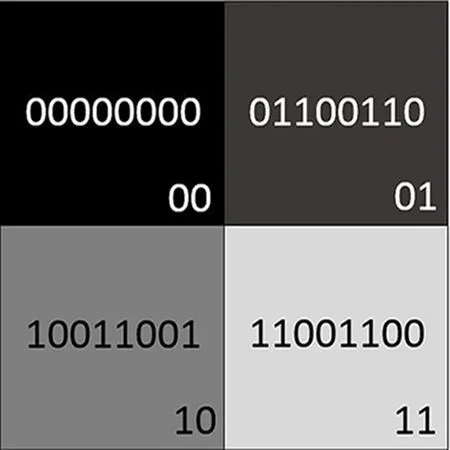
Fig.1 A simple image example and it’s NEQR representation.
2.2 Quantum Plain Adder and Subtracter
A quantum circuit for plain adding includes of quantum logic gates with time synchronized computational steps,[33]where the digital binaries are encoded in the quantum basis which are often called quantum registers.The addition of two quantum registers|a〉and|b〉is written as|a,b〉→ |a,a+b〉.The operation of the quantum plain adder is illustrated in Fig.2.

Fig.2 Quantum plain adder and subtracter.
By reversing the quantum plain adder circuit,the quantum circuit for subtracting is resulted.The output of quantum subtracter with the input(a,b)is(a,a−b)whena>b.Whena<b,the output is(a,2n+1−(b−a)),wheren+1 indicates the size of the second register.[33]
2.3 Quantum Xoring
A circuit for quantum Xoring of two qubits is illustrated in Fig.3,where,the symbols“◦”,“•”,and “⊕”,represent zero control,one control and NOT operations,respectively.Needles to say that|a〉,|b〉are the input qubit and|c〉is the output of the corresponding state.The operation of this circuit is shown in Table 1.
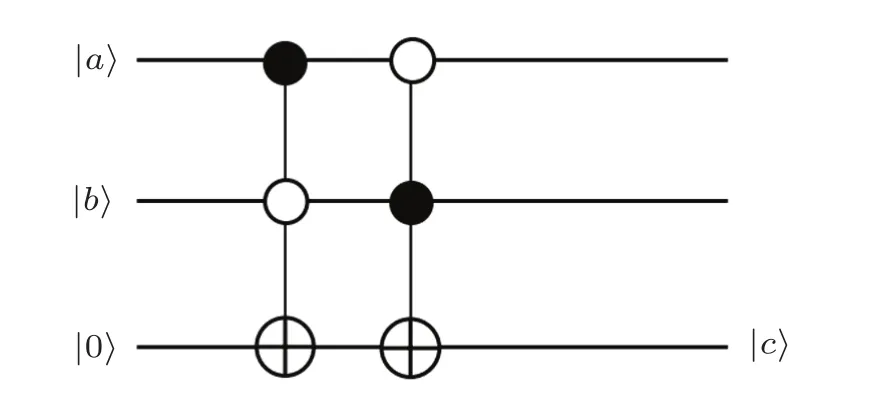
Fig.3 Two qubit Xoring circuit,the symbols“◦”,“•”,and“⊕”,represent zero control,one control,and NOT operations,respectively.

Table 1 Procedure for the Xing.
2.4 Quantum Wavelet Transform
Fourier transform is a useful and powerful tool in many area of science.However,there is another kind of unitary transforms,the wavelet transforms,which are as useful as the Fourier transform and can be used to expose the multi-scale structure of a signal and very useful for image processing and data compression.
To analyze continuous waves,a mathematical representation is used.Therefore it is needed to transform continuous waves into a digital signal and analyze it.There are three kind of transformation,Fourier transform,short time Fourier transform,and wavelets transform.
In definition,a wavelet is a small wave that start and stop.The energy of a wavelet which is concentrated in time is used to analyze transient,non-stationary,or timevarying phenomena.
Two class of useful wavelets in signal processing are Haar and Daubechies wavelets. Quantum Haar and Daubechies wavelets circuits are proposed in Ref.[34],The whole quantum circuit of Daubechies fourth-order wavelet kernel is illustrated in Fig.4,where a complete gate-level implementation ofis presented.[35]

Fig.4 Quantum circuit of Daubechies fourth-order wavelet kernel.[35]
3 Quantum Wavelet Transform Watermarking
In this section,our method for quantum watermarking based on QWT is presented,in which a 2n×2nsized binary image is embedded 2n×2nsized gray scale image.The proposed scheme includes three steps,scrambling,embedding,and extracting.
3.1 Quantum Scrambling
The scrambling methods are considered as preprocessing tasks in most of the image processing algorithms,where an image is transformed into another disordered one.In the proposed watermarking scheme,to increase the security of the proposed methods,a simple scrambling method is employed.[28]
Consider a binary 2n×2nsized watermark image.Using the NEQR representation,the watermark image is:
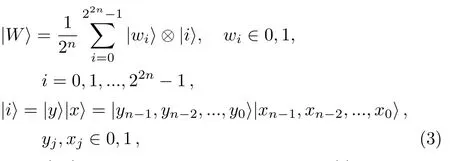
where,|wi〉is color information in position|i〉.
For the aim of scrambling,two 2n-bit keysM=M(1),M(2),...,M(2n)andN=N(1),N(2),...,N(2n)are generated randomly by the copyright owner.
The scrambling task is accomplished as follows:
•IfM(i)⊕N(j)=1 then:
TheIoperation is applied to the color value at position(i,j)of the watermark image.
•Otherwise,
TheXoperation is applied to the color value at position(i,j)of watermark image,
where,

To sum up,prior to embedding process watermark image|W〉is scrambled to|W′〉.The quantum scrambling circuit is shown in Fig.5.
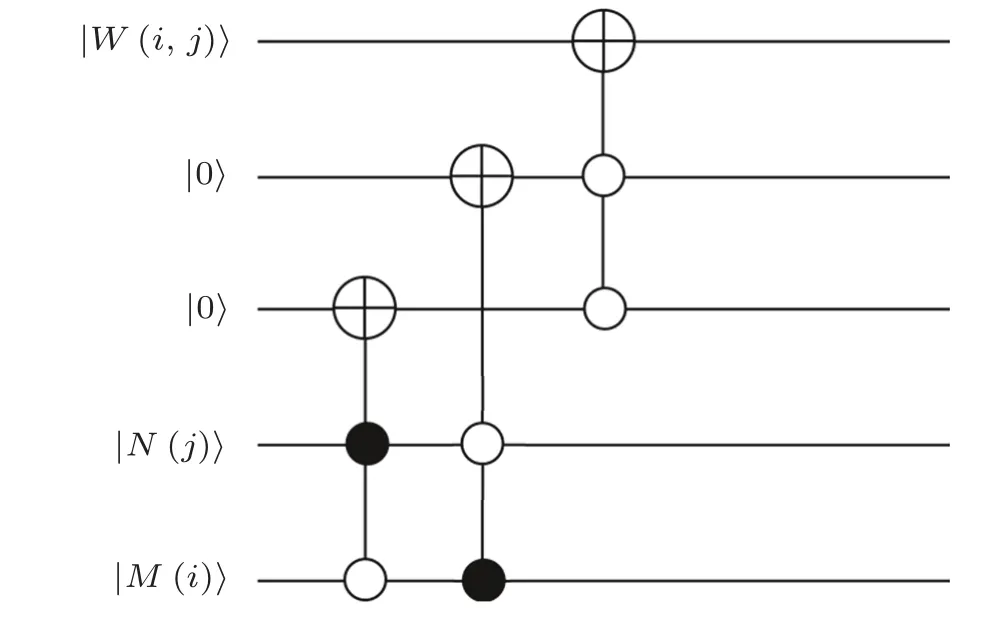
Fig.5 Quantum circuit for scrambling.[28]
3.2 Embedding Procedure
Consider a 2n×2nsized gray scale carrier image.Using NEQR model the carrier image is represented as:


For embedding purpose, the LSB XORing technique[36]and Quantum Wavelet Transform on carrier image are employed.The outline of the proposed embedding method is given in Fig.6,where,the procedure can be done as follows:
Step 1At first,an empty binary imageTis defined.This image is used in the process of valuation of the QWT of carrier image.

Step 2Using the quantum Xoring circuit in Fig.3,the Xoring circuit is applied to the two LSBs qubits of carrier image(|〉and〉),i.e.,here,an XOR operation is applied on the first two LSBs and then,according to the result of XOR operation and the message bit to be embedded,the binary imageTis modified or kept unchanged.The procedure is represented in Table 2.

Table 2 Procedure for the LSB XORing technique.

Fig.6 Outline of embedding procedure.
As shown in Table 2,


When the value ofti(ti=0)has to be set to 1,the following unitary transformation is applied to the empty image|T〉;

where

It is worth pointing out that the above unitary transform is a CNOT gate and it is required to initialize the empty image|T〉;

by considering on Table 2 one can find that:

then;

Also when the value ofti(ti=0)is not to be changed,the following unitary transform is used:

By applying the operationthe scrambled watermark image|w′〉is copied to the initially empty image|T〉.
Step 3Quantum Wavelet Transform on carrier image|C〉is defined as follows;

In this step,the embedder embeds the scrambled quantum watermark image|W′〉into the wavelet coefficient|WC〉:

where,(0<φ<1)is determined by the embedder and it will be not changed during the process of embedding and extracting.A quantum circuit for embedding procedure is shown in Fig.7.
3.3 Extracting Procedure
To extract the watermark image from embedded image,the original carrier image,its quantum wavelet transform,the proportionφand the scrambling key sequences for In-scrambling procedure are needed.The procedure is as follows:
Step 1In the first step,the scrambled watermark image is extracted from the embedded image.For the aim of extracting,a QWT is applied on both original carrier image|C〉and watermarked image|Wout〉as below:

To extract watermark image,a unitary transformationχiis defined as follows:

Afterwards,by applying the unitary transform(χi)to the empty binary imageWex,the extracted watermark bits are embedded onWex.The procedure is as follows:
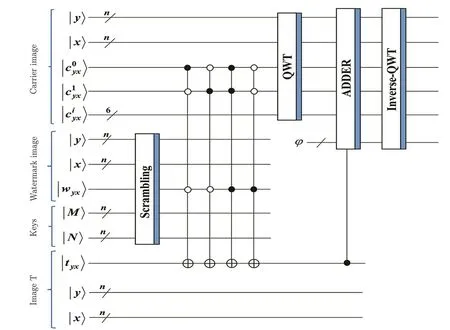
Fig.7 Quantum circuit of embedding procedure.

Considering on Table.2,one can find that:

then

By applying the operationto the image|Wex〉,the scrambled watermark image is extracted.
Step 3As soon as the first step is completed,the scrambled watermark image is extracted.Therefore,to obtain the original watermark image,an inverse scrambling(Inscrambling)procedure has to be applied to the extracted image.It is clear that using keysMandNintroduced in Sec.3,by applying the circuit illustrated in Fig.5 in reverse order,the copyright owner can simply achieve his watermark copyright image.
The details of the extracting procedure are shown in Table 3,and the outline of the extracting procedure is as shown in Fig.8.

Table 3 Procedure for extracting.

Fig.8 Outline of extracting procedure.
4 Simulation and Analysis
There are two key properties to be analyzed here,invisibility and robustness.Since the present state-of-theart quantum hardware currently cannot go beyond proof of principle outcomes,to analyze these two properties,using a computer with Intel(R)Core(TM)i7-4500u CPU 2.40 GHz,8.00 GB Ram equipped with the MATLAB R2015a environment,the proposed scheme is simulated.The carrier images and the watermark images employed in the simulations are given in Fig.9.
4.1 Invisibility
Invisibility represents the similarity between the original covers and the watermarked image.To analyze the invisibility of the proposed scheme two analyze methods are:taken into account the peak-signal-to-noise ratio(PSNR)analysis and the histogram analysis.
(i)The peak-signal-to-noise ratio(PSNR)
To compare the fidelity of a watermarked image with its original version,the peak-signal-to-noise ratio(PSNR)is often used.The PSNR is defined as follows:

where MAXCis the maximum pixel value of imageCand(MSE)is the mean squared error.For twom×nmonochrome images it is defined as follows:

whereCrepresents the carrier image and CW indicates watermarked image.
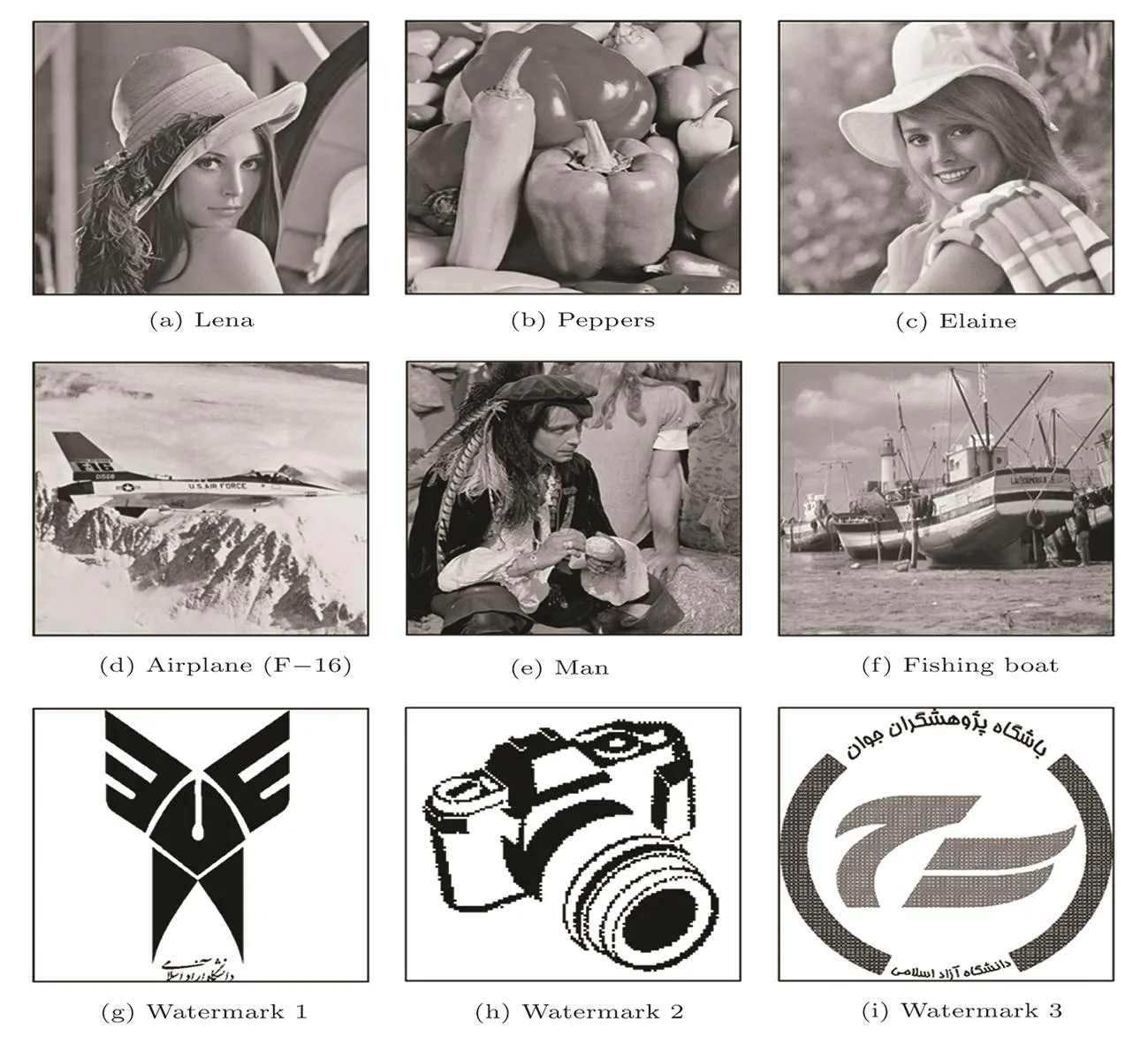
Fig.9 The carrier images((a)-(f))and the watermark images((g)-(i))used in the simulations.

Table 4 The calculated PSNR for different images in our simulations.
The results of the PSNR calculation in our simulation are given in Table 4.Based on Table 4,one can see that the proposed scheme indicates an acceptable PSNR.
The visual effects of the proposed watermarking procedure are illustrated in Fig.10.
(ii)Histogram
The images histogram analysis is an important method to evaluate the fidelity of a watermarked image with the carrier image.The histogram graph,indicates the frequency of pixels intensity values,where,thexaxis refers to the gray level intensities and theyaxis refers to the frequency of these intensities.Using the histogram analyzing one can judge if the images are match or not.
The histogram graphs of the three carrier images and the histogram graphs of their corresponded watermarked images where the watermark 1.is considered as a watermark image are given in Fig.10.Based on Fig.11 the histogram graphs of the watermarked images and of the original images are in good agreement.

Fig.10 The original carrier images are given in the first row,and the watermarked images are presented in the second row.Watermark image in all of second image is the watermark 1.
4.2 Robustness
Robustness refers to the ability of message to survive in attacks.[37]The Bit Error Rate(BER)and the Correlation Two-Dimensional(Corr2−D)are two most useful quantities used in robustness analysis.
(i)The Bit Error Rate(BER)
This Bit Error Rate(BER)is defined as the inverse of PSNR:

The BER determines the portion of the original image’s bits,which are changed during the watermarking procedure.For example,if the PSNR is 50 db,the BER would be 0.02,i.e.,%2 of bits have been changed during the watermarking.The result of the BER values calculated in our simulation are given in Table 5.
(ii)Correlation Two-Dimensional(Corr 2–D)
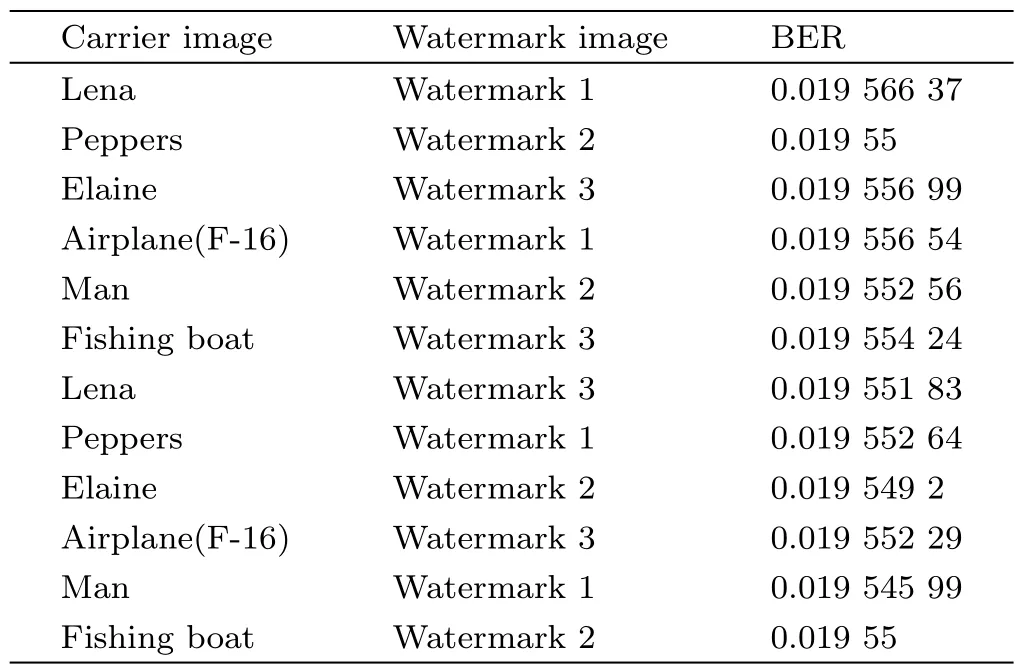
Table 5 All the images’BER in our simulations.
The Correlation Two-Dimensional,i.e.,Corr 2–D,determines the correlation rate between two images,sayAandB,which is calculated as follow:

whereandcorrespond to the average pixel values inAandB,respectively.
The Corr 2–D is a real number in the range of[-1,1].The positive or negative sign means the two input images have positive or negative correlation respectively.Notice that the output Corr 2−D=1 means the two images are exactly the same.
In our simulation,to analyze the algorithm’s resistance against attacks,we consider 6 different types of attacks which are exerted on the watermarked image.The watermarked image,after attack,is extracted and corresponded Corr 2–D is calculated.i.e.,the correlation between original and extracted watermark image is achieved.The results are given in Table 6 and Fig.12.

Fig.11 The histogram graphs of the tree original images and the histogram graphs of their corresponded watermarked images(“Watermark 1” is watermarked).
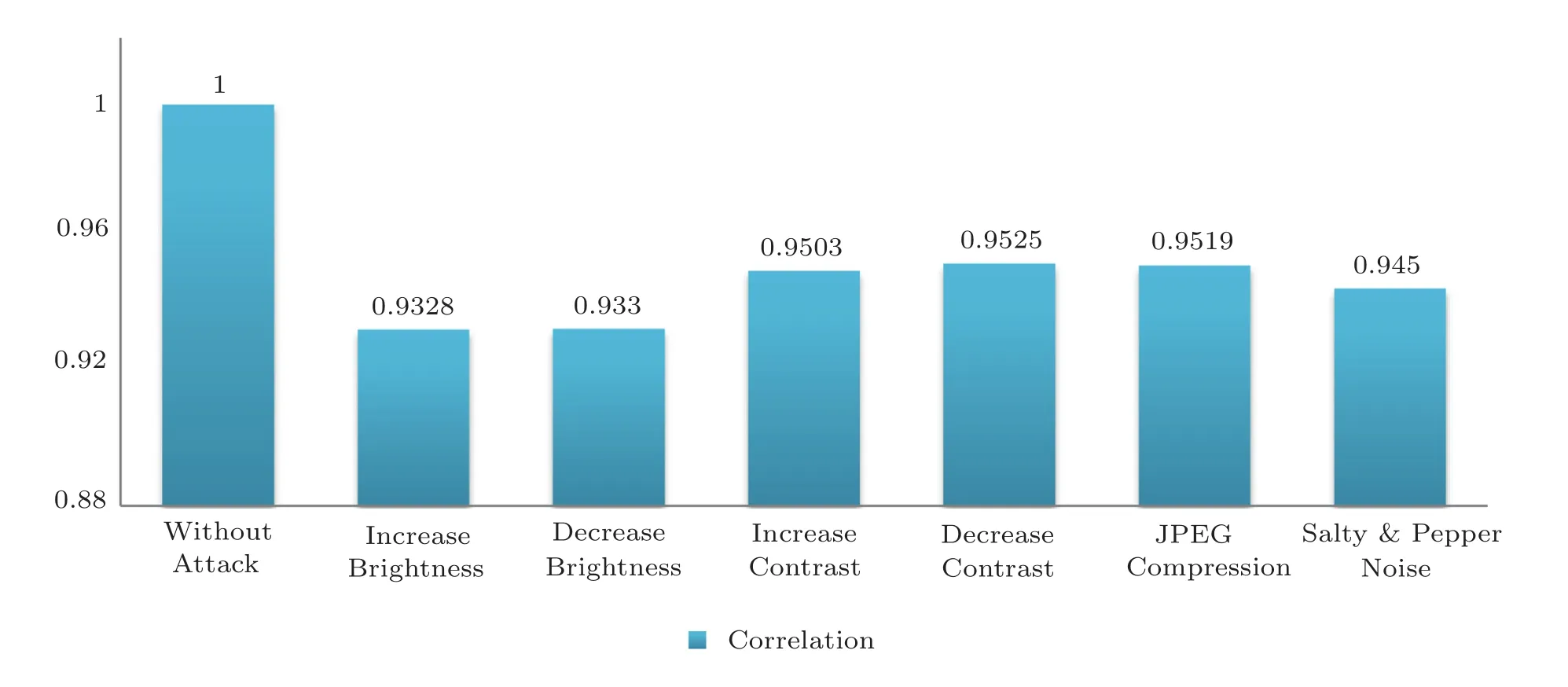
Fig.12 The correlation rate of extracted watermarks after attacks.

Fig.13 Visual display of extracted watermark after attacks.
Considering the results,which are presented in Table 6 and Fig.12,one can judge that the proposed watermarking scheme indicates good resistance against the considered attacks.Figure 13 shows the visual display of the extracted watermark after attacks.As seen,the watermark image is recognizable and the proposed algorithm shows good resist against the attacks.
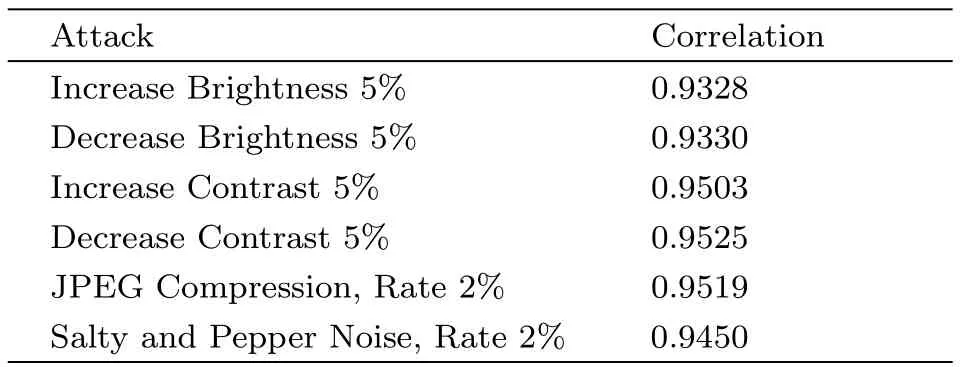
Table 6 The correlation rate of extracted watermarks after attacks.
5 Conclusion
Any applicable protocol of watermarking has to satisfy two key properties,invisibility and robustness.Invisibility means that there is an acceptable similarity between the original covers image and the watermarked image.Robustness refers to the resistance of the scheme against attacks.Here we have introduced a novel robust quantum watermarking protocol exhibits acceptable invisibility performance.In the proposed scheme,employing quantum wavelet transformation,a binary 2n×2nsized image is embedded in the 2n×2nsized gray scale image.To obtain better security,prior to the embedding procedure the watermark image is scrambled.Then an LSB XORing technique and quantum wavelet transform on carrier image are employed to embed the watermark image in the carrier one.It has been shown that by reversing the embedding and the scrambling procedures,the copyright owner can simply extract the watermark image.To evaluate the performances of the proposed scheme,the scheme is simulated,where by calculating PSNR and analyzing histogram graphs the invisibility characteristics of the protocol is confirmed.Furthermore,by examining the Bit Error Rate(BER)quantity and the Correlation Two-Dimensional(Corr 2–D),the robustness of the scheme is proved.To summarize,when compared with previous watermarking schemes,the advantages and effectiveness of the proposed scheme can be summarized into five points.First,by introducing a scrambling method,the watermark image is converted into a scrambled image,which guarantees that the original watermark image will not be recovered by any attacker,even when he extracts the scrambled binary image.Second,as compared with the previous protocols,our scheme satisfies not only the invisibility performance but also its good robustness.
Acknowledgement
It is our pleasure to thank Dr.Alimorad Ahmadi for the final edition of the paper.M.Naseri would like to thank Soheila Gholipour,Yasna Naseri and Viana Naseri for their interests in this work.
References
[1]C.H.Bennett and G.Brassard,inProceedings of the IEEE International Conference on Computers,Systems and Signal Processing,Bangalore,India,IEEE,New York(1984)p.175.
[2]S.E.Venegas Andraca and S.Bose,Storing,Processing and Retrieving an Image Using Quantum Mechanics,in AeroSense 2003,pp.137–147.International Scociety for Optic and Photonics(2003).
[3]S.E.Venegas Andraca and J.L.Ball,Quantum Inf.Process 9(2010)1.
[4]P.Q.Le,A.M.Iliyasu,F.Dong,and K.Hirota,Int.J.Appl.Math.40(2010)113.
[5]P.Q.Le,F.Doyng,and K.Hirota,Quantum Inf.Process 10(2011)631784.
[6]Y.Zhang,K.Lu,Y.H.Gao,and M.Wang,Quantum Inf.Process 12(2013)2833.
[7]X.H.Song,S.Wang,S.Liu,A.A.Abd El-Latif,and X.M.Niu,Quantum Inf.Process 12(2013)3689.
[8]S.Yuan,X.Mao,L.Chen,and Y.Xue,Optik 124(2013)6386.
[9]X.H.Song,S.Wang,S.Liu,A.A.Abd El-Latif,and X.M.Niu,Multimedia Systems 20(2014)379.
[10]Y.Zhang,K.Lu,Y.H.Gao,and Q.Sobel,Science China Information Sciences 58(2014)1.
[11]X.B.Chen,G.Xu,Y.Su,and Y.X.Yang,Quantum Inf.Comput.14(2014)0589.
[12]X.B.Chen,Y.Su,X.X.Niu,and Y.X.Yang,Quantum Inf.Process 13(2014)101.
[13]X.B.Chen,Z.Dou,G.Xu,C.Wang,and Y.X.Yang,Quantum Inf.Process 13(2014)85.
[14]N.Jiang,L.Wang,and W.Y.Wu,Int.J.Theor.Phys.53(2014)2463.
[15]R.G.Zhou,Y.J.Sun,and P.Fan,Quantum Inf.Process 4(2015)1717.
[16]N.R.Zhou,T.X.Hua,L.H.Gong,D.J.Pei,and Q.H.Liao,Quantum Inf.Process 14(2015)1193.
[17]T.Hua,J.Chen,D.Pei,W.Zhang,and N.R.Zhou,Int.J.Theor.Phys.54(2015)526.
[18]Y.Zhang,K.Lu,K.Xu,Y.Gao,and R.Wilson,Quantum Inf.Process 14(2015)1573.
[19]R.G.Zhou and Y.J.Sun,Quantum Inf.Process 14(2015)1605.
[20]M.Naseri,et al.,International Journal for Light and Electron Optics(2016).
[21]Z.Xia,X.Wang,X.Sun,and Q.Wang,IEEE Transactions on Parallel and Distributed Systems 27(2016)340.
[22]Z.Fu,K.Ren,J.Shu,X.Sun,and F.Huang,IEEE Transactions on Parallel and Distributed Systems 27(2016)2546.
[23]Zh.J.Fu,et al.,IEICE Transactions on Communications E98-B(2015)190.
[24]Z.G.Qu,X.B.Chen,X.J.Zhou,X.X.Niu,and Y.X.Yang,Opt.Commun.283(2010)4782.
[25]B.A.Shaw and T.A.Brun,Phys.Rev.A 83(2011)022310.
[26]N.Fatahi and M.Naseri,Int.J.Theor.Phys.51(2012)2094.
[27]W.W.Zhang,F.Gao,B.Liu,H.Y Jia,Q.Y.Wen,and H.Chen,Int.J.Theor.Phys.52(2013)504.
[28]S.Heidari and M.Naseri,Int.J.Theor.Phys.55(10)(2016)4205.
[29]P.Q.Le,F.Y.Dong,and K.Hirota,Quantum Inf.Process 10(2011)63.
[30]X.H.Song,S.Wang,S.Liu,A.A.Abd El-Latif,and X.M.Niu,Quantum Inf.Process 12(2013)3689.
[31]Y.G.Yang,et al.,Quantum Inf.Process 13(2014)1931.
[32]Y.Zhang,K.Lu,Y.H.Gao,and M.Wang,Quantum Inf.Process 12(2013)2833.
[33]V.Vedral,A.Barenco,and A.Ekert,Phys.Rev.A 54(1996)1.
[34]A.Fijany and C.P.Williams,Quantum Wavelet Transform:Fast Algorithm and Complete Circuit,Quantum Computing and Quantum Communications,Springer Berlin,Heidelberg(1999)pp.10–33.
[35]Y.Zhang,K.Lu,Y.H.Gao,and M.Wang,Quantum Inf.Process 12(2013)2833.
[36]H.B.Kekre and A.A.Archana,Int.J.Cryp.Secu.1(2008)1.
[37]N.Jiang,N.Zhao,and L.Wang,Int.J.Theor.Phys.55(2016)107.
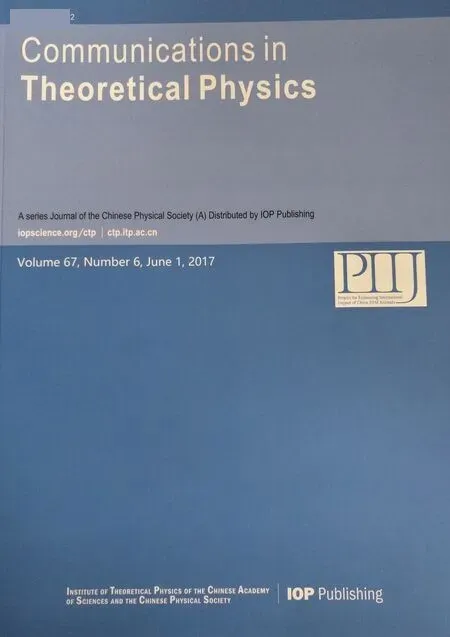 Communications in Theoretical Physics2017年6期
Communications in Theoretical Physics2017年6期
- Communications in Theoretical Physics的其它文章
- A Pair of Resonance Stripe Solitons and Lump Solutions to a Reduced(3+1)-Dimensional Nonlinear Evolution Equation∗
- New Patterns of the Two-Dimensional Rogue Waves:(2+1)-Dimensional Maccari System∗
- Coherent-State Approach for Majorana Representation∗
- Two-Body Local-Momentum Approximation of Spinless Particles Scattered by a(1+1)-D Woods–Saxon Barrier Potential
- Exhibition of Monogamy Relations between Entropic Non-contextuality Inequalities∗
- Quantum Coherence Quantifiers Based on R´enyi α-Relative Entropy∗
